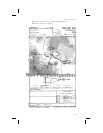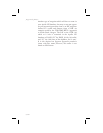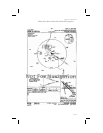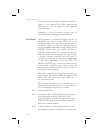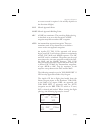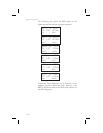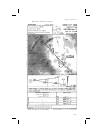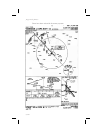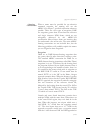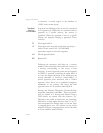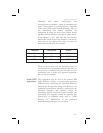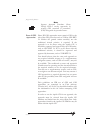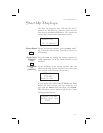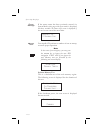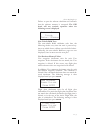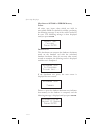Naming
Conventions
When a name must be provided for an otherwise
unnamed waypoint, the naming will use the
ARINC-424, chapter 7 specified convention whenever
possible. There are a few types of waypoints, DME
arc waypoints greater than 26 nm from the reference
and single character NDB idents, which are not
adequately addressed by the ARINC-424
specification. Most of these names are intuitive after
you understand a few of the rules. The entire ARINC
naming conventions are not included here, but the
following guidelines will probably explain the names
you see assigned to these waypoints.
Exceptions
DME arc or DME-distance/bearing waypoints that
are greater than 26 miles from their reference point.
The standard ARINC convention for DME arc or
DME-distance/bearing (sometimes called Rho-Theta)
waypoints is to use ‘D’ followed by the bearing from
the waypoint, followed by an Alpha character from A
to Z corresponding to the number of miles, from 1 to
26, rounded to the nearest whole mile. A waypoint on
the BKE VOR 272 radial at 25 nm would then be
named D272Y as is the IAF in the Baker, Oregon
approach example above. When the distance is greater
than 26 miles, such as for the Topeka, KS VOR DME
RWY 3 approach, the waypoint is named by using the
first two characters of the reference navaid ID,
followed by the bearing from the navaid. The IAF at
the Topeka VOR, TOP, located on the 231 radial at
31 nm is then named TO231. The IAF on the TOP
176 radial at 31 nm is named TO176.
Canada and some South American countries have
multiple NDBs with the same ident. When these are
in the same ICAO region, they can’t both be in the
data. When this happens, one airport which uses a
Golf NDB, “G,” would have the waypoint named
“G.” The next airport that uses a “G” NDB in the
approach waypoints would have a waypoint named
with the 1 letter ident and ‘NB’ for NDB appended to
9-87
Approach Notes



